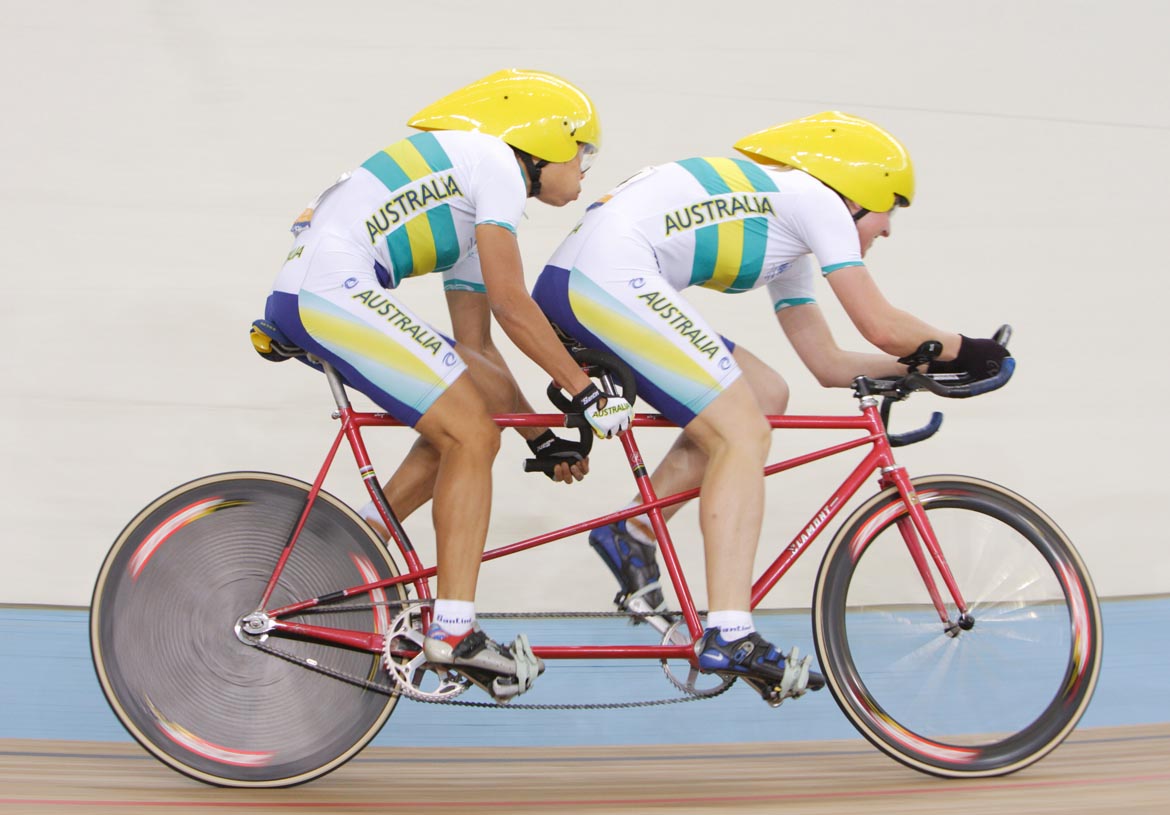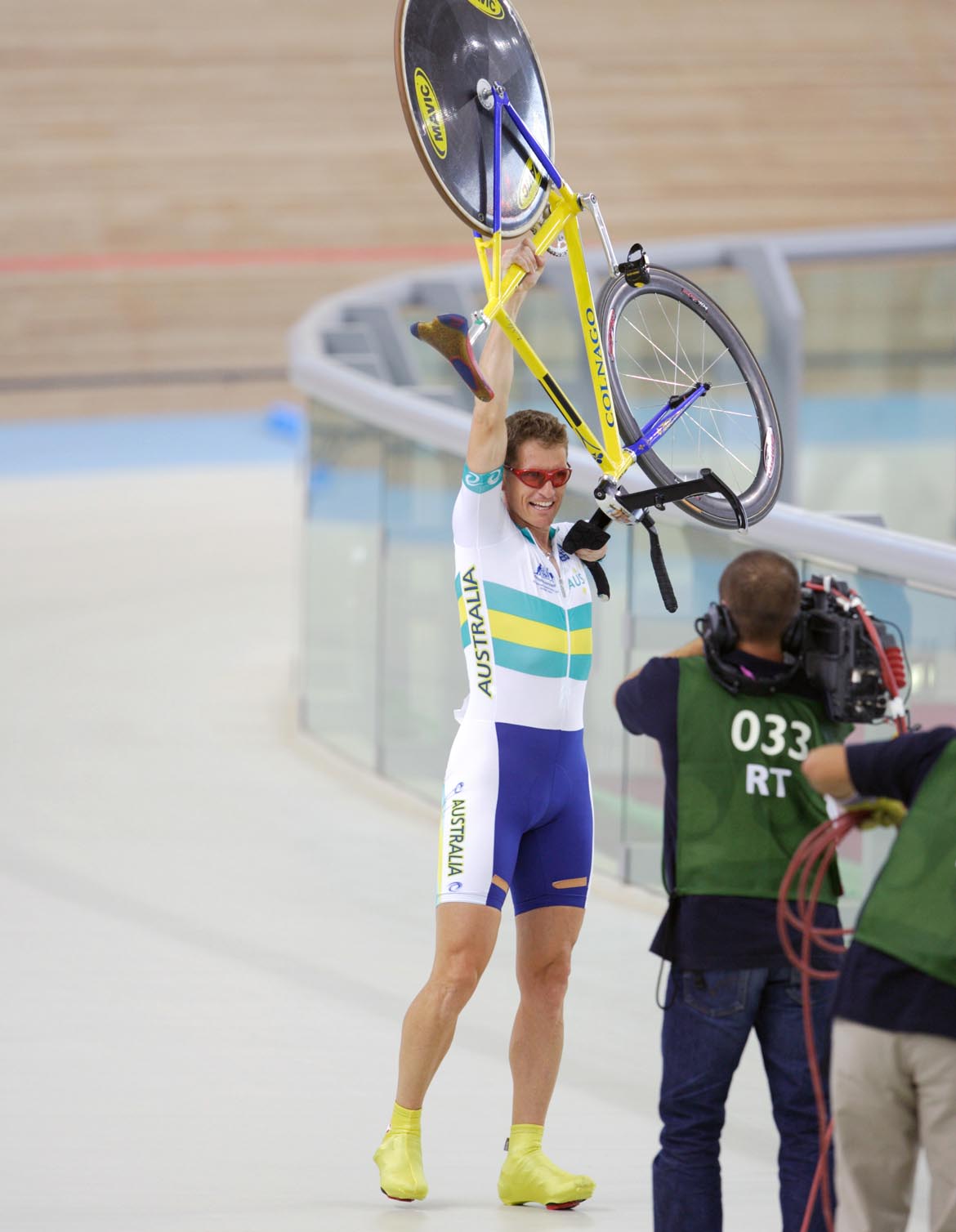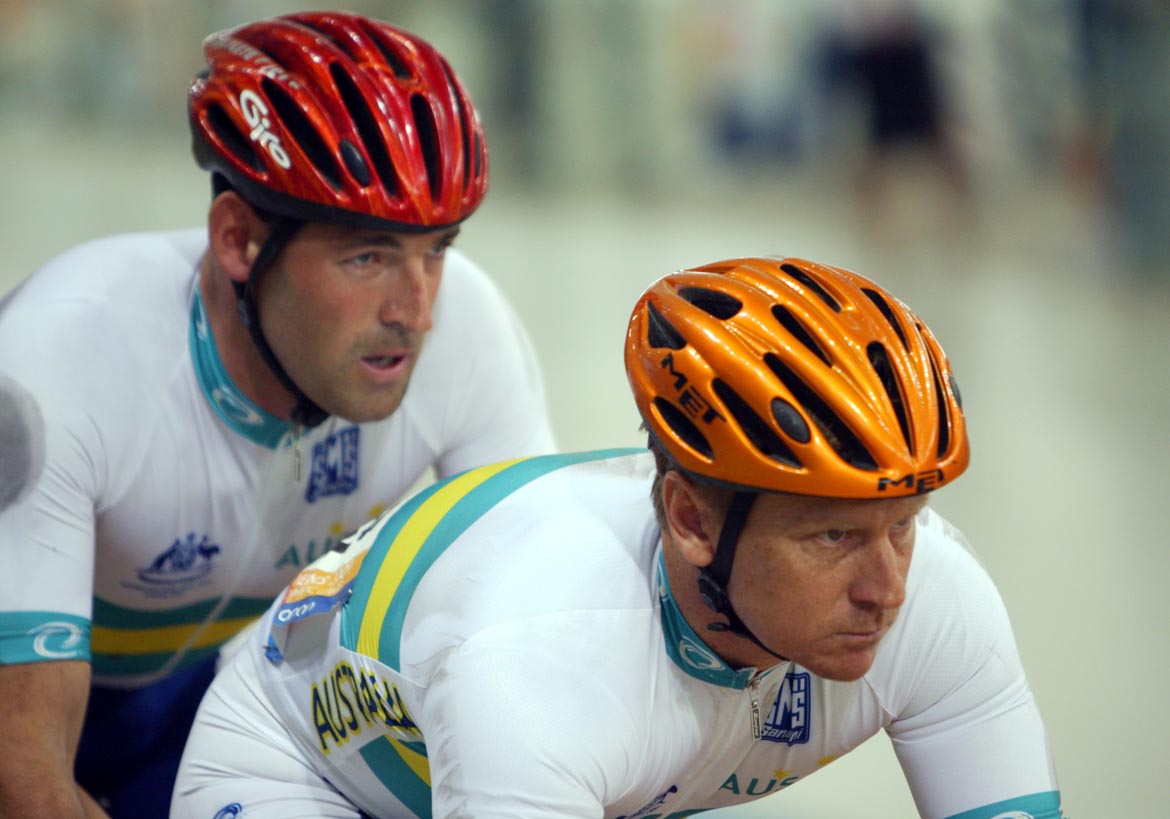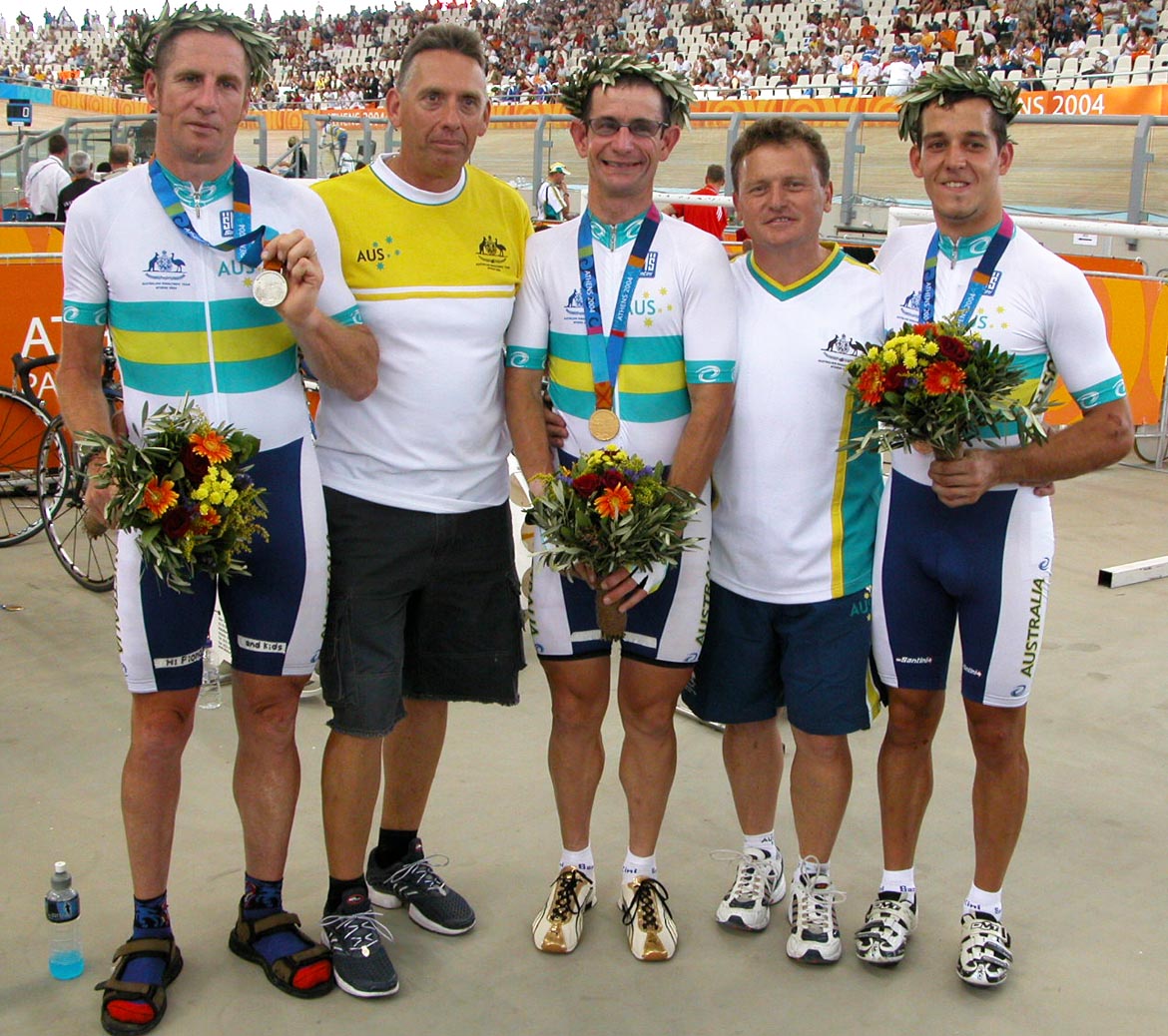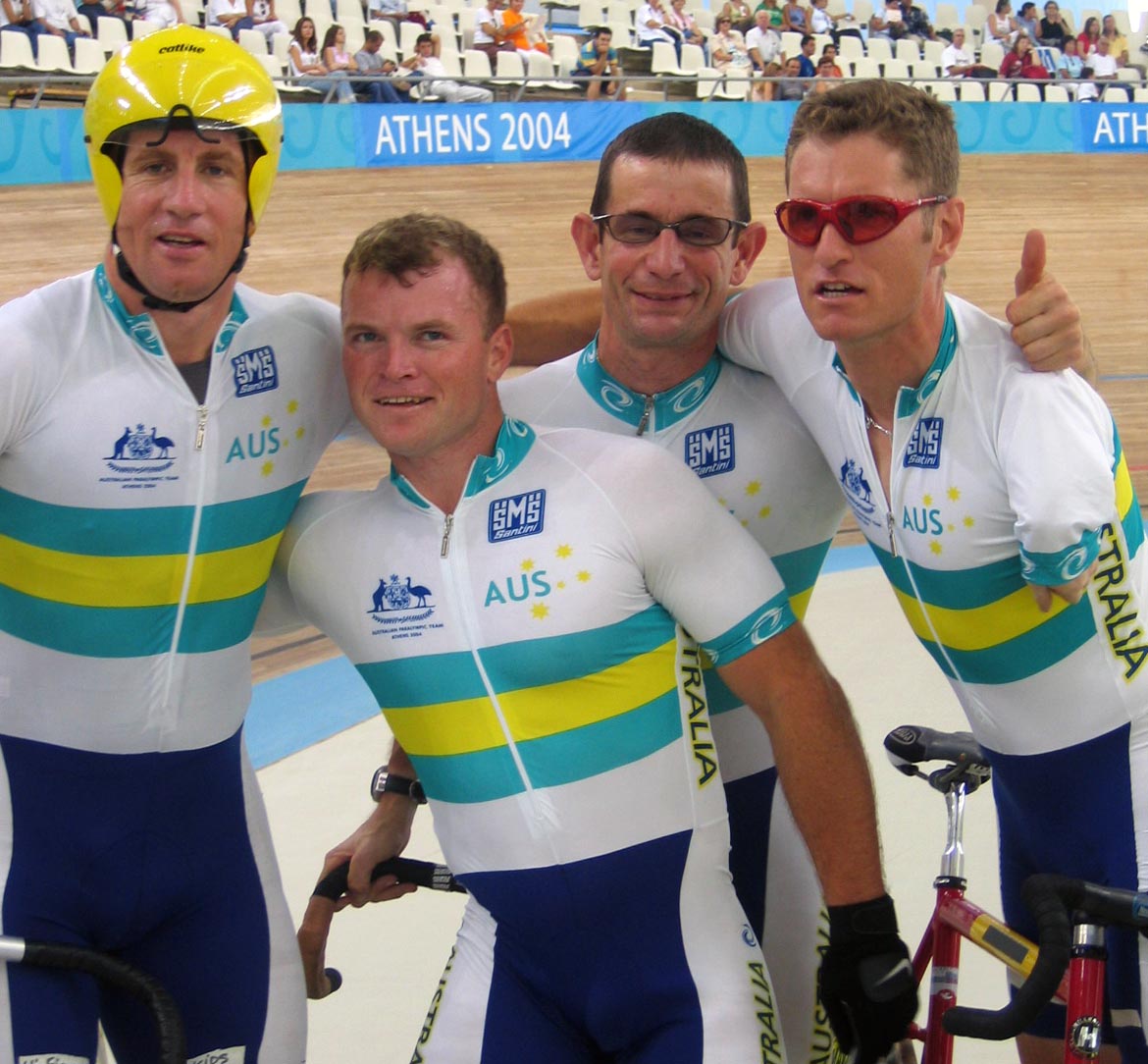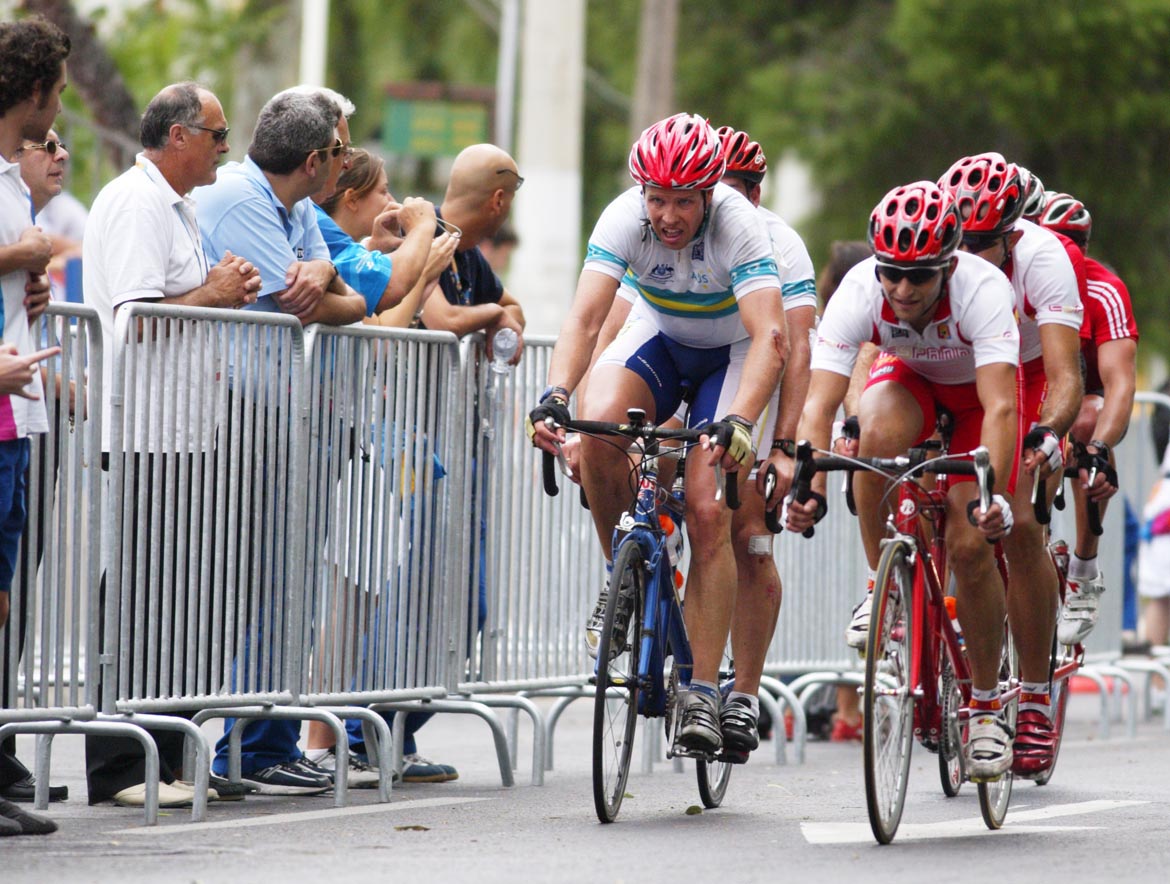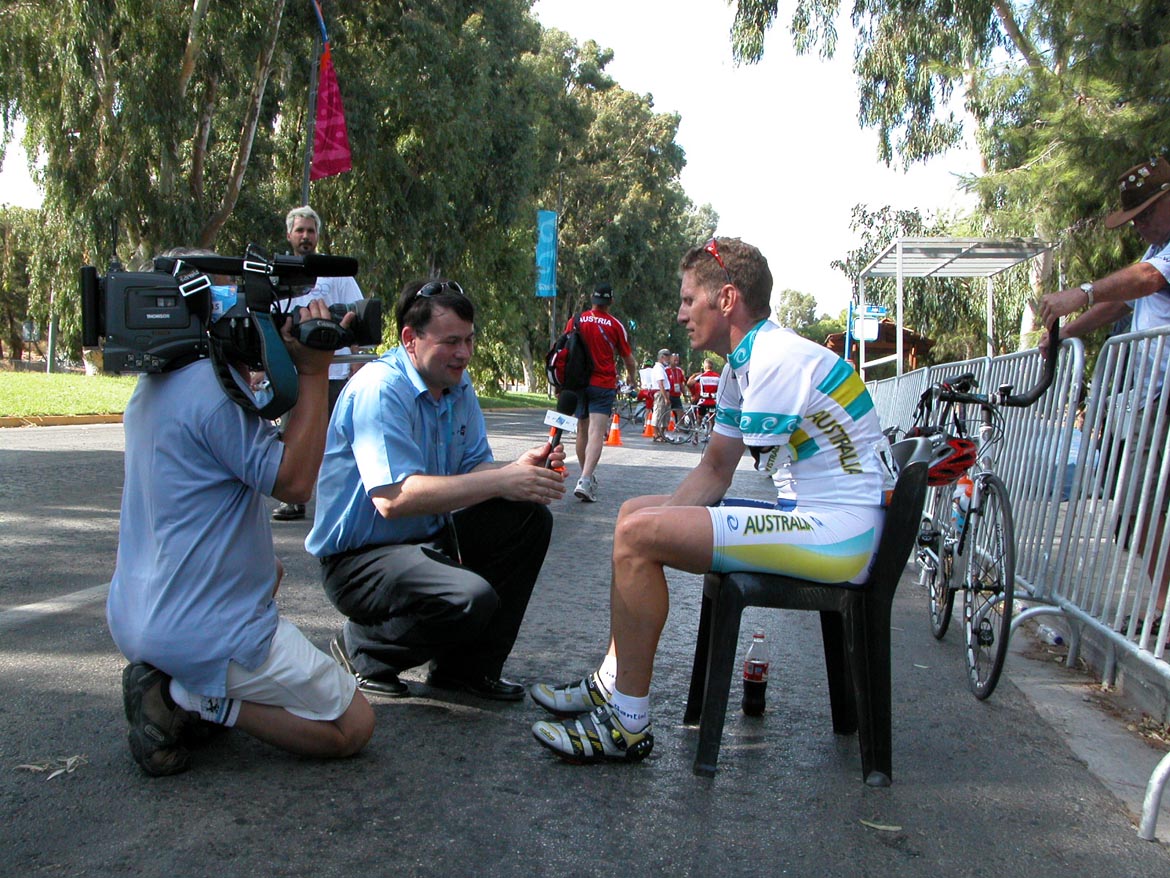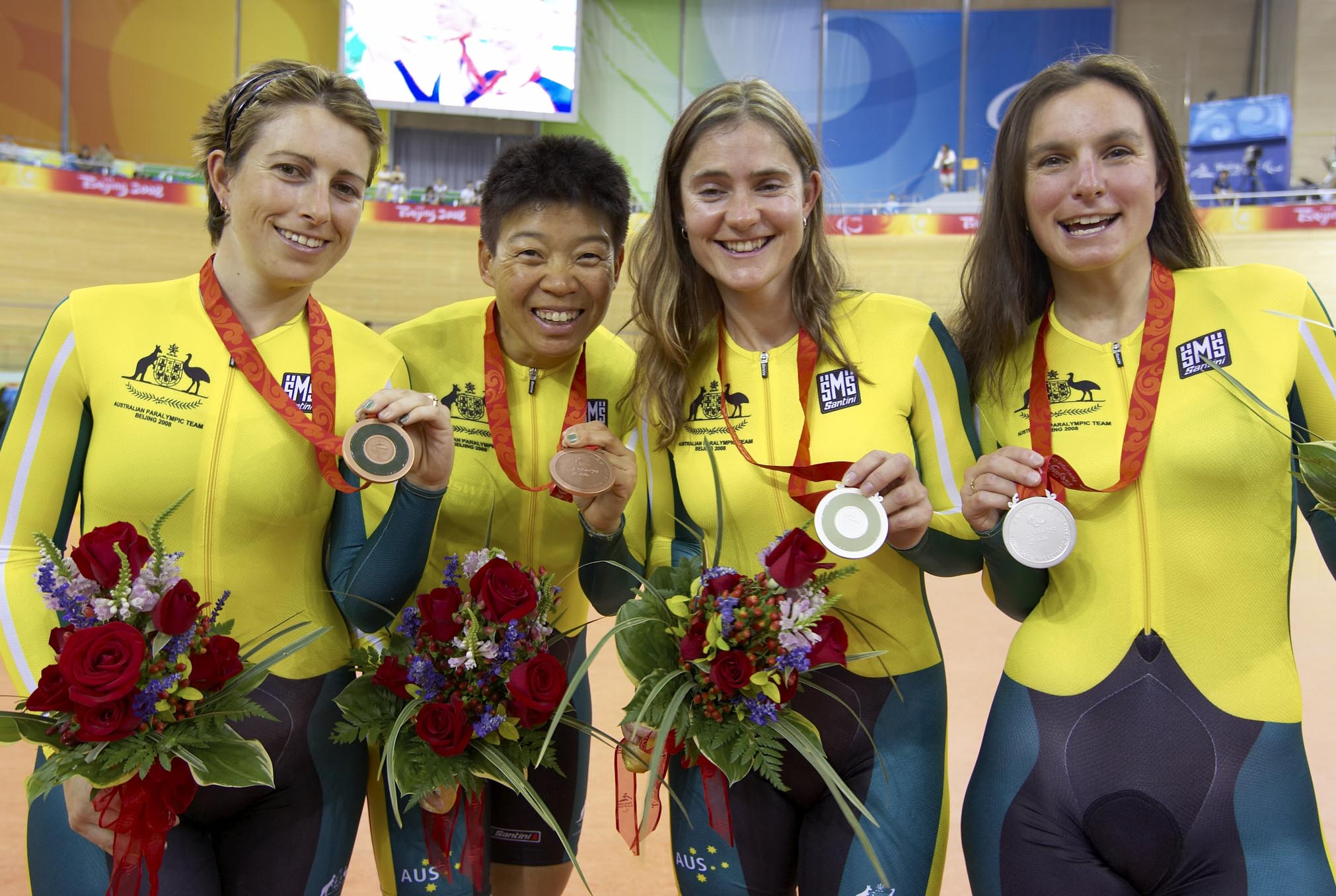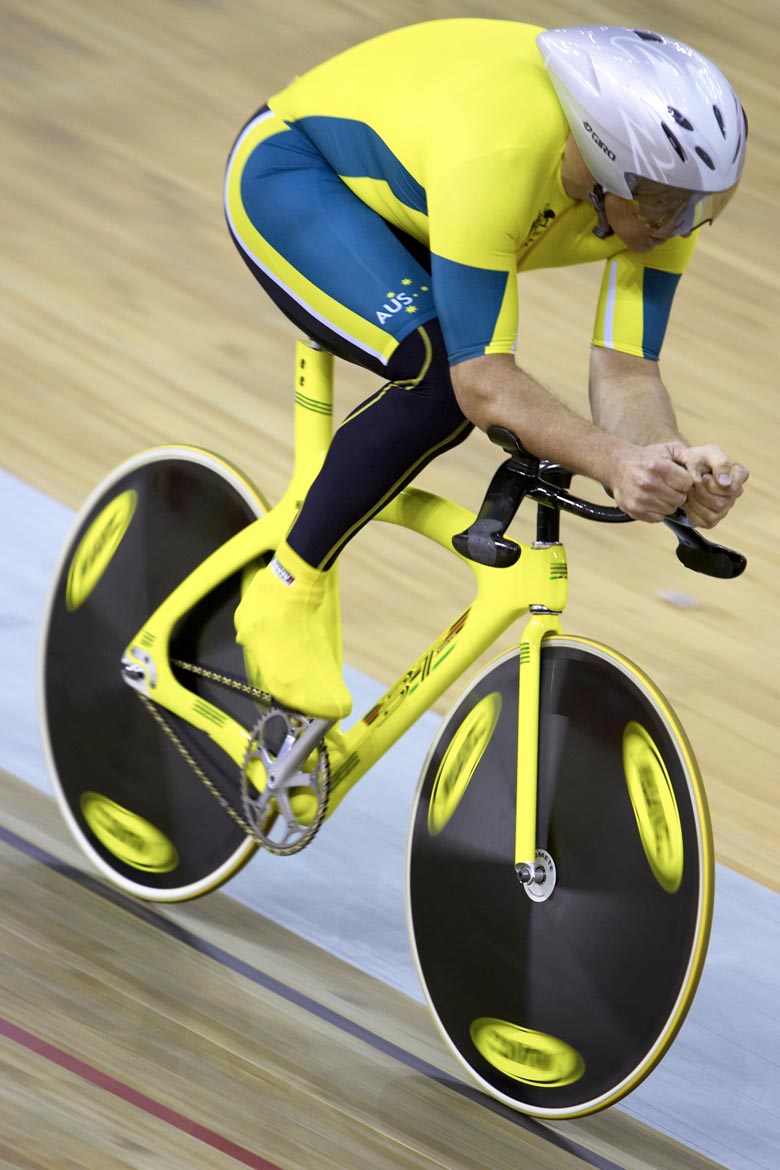
Cycling made its debut at the Paralympic Games in 1984, when 22 male cyclists from 9 countries competed in road events for athletes with cerebral palsy. In 1988, events were added for amputee athletes and tricycles for riders with cerebral palsy who could not control bicycles.
In 1992, the program expanded to include vision impaired athletes on tandems with sighted pilots, who can’t be current able-bodied internationals. Tandems are big, heavy and hard to manoeuvre – the cycling equivalent of truck racing – but also provide thrilling racing, reaching 60 kmh on the track and more than 80 kmh on the road.
At the 2004 Games, handcycling was added to the Paralympic program.
In 1988 Gregory Caines became Australia’s first Paralympic cyclist and the only Australian cyclist in Seoul. He finished fourth in the 60km LC3 road race. After road events for tandems were introduced in Barcelona, pilot Timothy Harris and Prue-Anne Reynalds finish fourth in the mixed tandem, but Australia still hadn’t won its first cycling medal.
With the appointment of experienced coaches and increased program support, the Australian cycling team dominated Paralympic cycling from 1996 to 2004, topping the Paralympic Games medal tally in1996, 2000 and 2004. In between Paralympic years, it also led all countries at the 1998 and 2002 world championships.
Australian Paralympic cycling has benefitted from the transfer of athletes such as Chris Scott (6 Paralympic gold medals), Kieran Modra (5 Paralympic golds) and Jessica Gallagher (1 Paralympic bronze) from athletics, as well as developing athletes through cycling programs.
In 2008, former head coach Kevin McIntosh (1999-2006) and triple gold medallist Peter Homann became the first Australians inducted into International Paralympic Committee Hall of Fame.
















